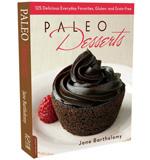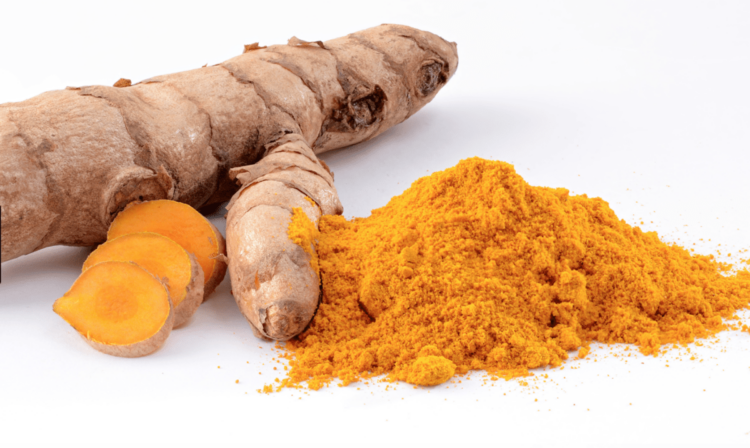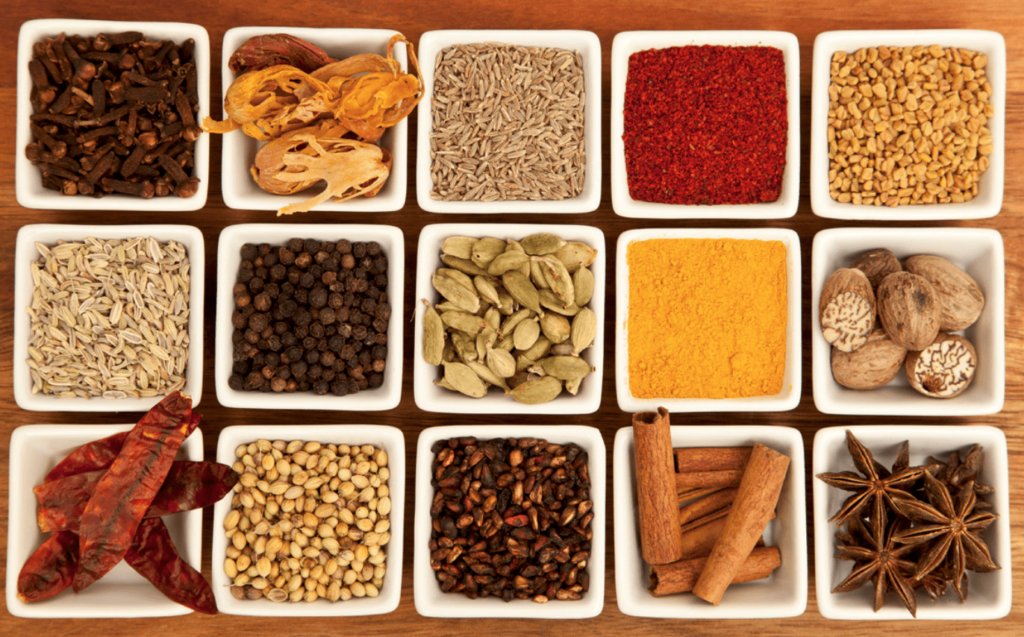Turmeric is all the rage. It’s in everything from smoothies to chai, curries, and of course Golden Milk. Turmeric is packed with earthy, pungent flavor. This bitter, yellow, peppery root contains the active ingredient curcumin which can support health in many ways. I believe perhaps the modern world is finally rediscovering the value of this plant, used for thousands of years in Ayurvedic and Chinese medicine.
Turmeric as an herb stimulates blood circulation. It is a powerful anti-inflammatory food, and it destroys many types of cancer cells. Yep, turmeric just might just be a major resource in healing many modern chronic maladies that we see on the rise. Essentially turmeric helps to heal and nourish the organs to keep the body systems functioning properly. Generally safe, there are a few contra-indications, as turmeric is not for everyone.
Oh, there’s plenty of hype about turmeric. People get excited about exotic foods that taste and feel good. Vendors make ridiculous claims that sometimes cannot be supported by reliable research. However many studies do substantiate the health benefits of turmeric in both Western clinical practice and Chinese medicine. I see turmeric as a fad that is quite beneficial for most people. I expect it will increase in popularity and be around for a very long time.
But Can you Absorb Turmeric?
Before you start sprinkling turmeric on everything, please know that curcumin (its major active compound) is poorly absorbed in the body and has minimal impact on blood levels when taken alone. Fortunately, there are four ways you can improve absorption:
- Always eat tumermic with black pepper: Black pepper can greatly improve absorption of turmeric in the body. In one study, when taken with 20 mg of piperine (active ingredient in pepper) per 2.2 pounds of body weight, it improved bioavailability of turmeric by 2000%.
- Add some fat: Turmeric is fat-soluble and thus much better absorbed when taken with fat. Examples of fat are coconut milk, coconut oil, MCT oil, animal fats, butter.
- Heat it: Heat is said to increase the solubility of curcumin (the primary active constituent in turmeric) by 12 times, which may also make it more easily absorbed in the body.
- Eat turmeric with quercetin-rich foods: Quercetin, a flavonoid, is known to inhibit an enzyme that inactivates curcumin. Adding turmeric to quercetin-rich foods can increase the absorbtion of turmeric in the body. Foods rich in isoquercitrin include leafy vegetables, broccoli, red onions, peppers, apples, grapes, black tea, green tea, elderberry juice concentrate, juniper berries, carob flour, bee pollen, cocoa powder, chia seeds, moringa, and some fruit juices. Click here for a list of foods highest in quercetin.
Examples: A hot coconut curry made with coconut milk, coconut oil, black pepper, turmeric and red onions is a great option for maximizing your body’s ability to absorb turmeric.
Another example is to make hot golden milk with coconut milk, turmeric, black or green tea, black pepper, MCT oil, and other spices. Yum!
My personal favorite turmeric recipes on this website are:
- Homemade Curry Powder – Nightshade-free!
- Turkey Curry Stew with Pumpkin
- Sweet Potato Pakora with Garlic Scapes
- Curried Vegetable Dal, Nightshade-free!
- Paleo Curried Pumpkin Dip
- Sweet Potato Latte with Turmeric
- Paleo Lamb Stew with Thai Spices
- Superfood Hot Chocolate Chai with Turmeric
- Sweet Potato Latte with Turmeric
- Kashmiri Curry Chicken Tenders
- Spiced Chai Tea Latte
- Golden Milk Banana Chai Frappe
History of Turmeric
The story of Indian spices is over 7,000 years old. Centuries before Greece and Rome appeared on the scene, merchants were carrying Indian spices to Persia, Arabia and Egypt. Turmeric powder was used in cooking. The juice was used to dye cloth, to heal wounds and bruises. Ayurvedic practitioners used fumes of burning turmeric to clear bronchial congestion. Turmeric paste was used to treat a variety of skin conditions such as smallpox, blemishes, and shingles.
Turmeric (Curcuma longa) is a relative of ginger (Zingiber officinale), both tropical plants that originated in India. India is still the world’s primary source of turmeric. The word “curry” came from the Tamil language where “kari” means “sauce“. Many Indian dishes use curry, known for its distinctive, bright golden yellow color. During the colonization of India by the British and Portuguese, curry powder became a popular exotic spice in the West.
In the 17th century, British and Portuguese traders brought shiploads of Indian spices to Europe.
Turmeric spread from India to China, where it was called jianghuang, or yellow ginger. Chinese doctors used it to promote flow of qi or energy in the body, to eliminate blood stagnation, to increase blood circulation, to calm the nerves, ease the mind, treat pain, increase the flow of bile, and treat carcinomas.
In the “Illustrated Chinese Materia Medica” turmeric is recommended to treat blood disorders and dissolve pain. It is said to clear heat (despite having a warm nature), to alleviate menstrual and other types of blood stagnation.
The use of turmeric for cancer is elaborated in “An Illustrated Guide to Antineoplastic Chinese Herbal Medicine”, where the herb is indicated for cancer of the cervix, liver, ovary, lung, thyroid, for lymphosaracoma, and uterine fibroids.
Turmeric and other herbs have been used for thousands of years in Chinese medicine.
According to “Pharmacology and Applications of Chinese Materia Medica” and “Chinese Herbal Medicine Materia Medica“, in laboratory animal studies, turmeric has been shown to:
- reduce blood lipids (like cholesterol)
- improve blood circulation to the heart
- lower blood pressure
- reduce platelet aggregation and break up blood clots.
- increase bile formation and flow
- reduce inflammation
- alleviate pain
- stimulate uterine contraction
In Western clinical trials, turmeric has been successfully used to treat many types of cancer, where the essential oil of the herb is injected directly into the tumor. According to “Modern Study and Application of Materia Medica” turmeric was used to treat coronary heart disease, liver cancer, anemia, and chronic pelvic inflammation.
In one case study a cancer patient who opted out of chemotherapy, experienced a total remission of myeloma after taking oral curcumin complexed with bioperine (to aid absorption), of 8 g each evening on an empty stomach, and a weekly course of hyperbaric oxygen therapy. The case study states:
“The biological activity of curcumin is indeed remarkable. It is a highly pleiotropic molecule which possesses natural antioxidant, anti-inflammatory, antiseptic and analgesic properties.7 More recently, it has demonstrated antiproliferative effects in a wide variety of tumor cells including myeloma cells and exerts its antiproliferative effects through multiple cellular targets that regulate cell growth and survival.”
Is Turmeric Safe?
According to the University of Maryland Medical Center, “Turmeric in food is considered safe. Turmeric and curcumin supplements are considered safe when taken at recommended doses.” The National Institutes of Health (NIH) classifies turmeric as “likely safe”. Turmeric is safe for most people when consumed in amounts found in food. However turmeric can have side effects when taken in large doses.
Yes, there are some risks. High doses of turmeric can lower blood sugar or blood pressure, which means people taking diabetes or blood-pressure medication should use caution while taking turmeric supplements. Taking turmeric might slow blood clotting, which might increase risks in people with bleeding disorders. People preparing for surgery should avoid turmeric supplements which could increase the risk of bleeding. Turmeric may also interfere with how the liver processes certain drugs, so it is best to consult a doctor before taking large doses of turmeric alongside medication.
Blood thinner medications can interact with large doses of turmeric, as can drugs that reduce blood clotting. People may experience bleeding or bruising when combining large doses of turmeric with aspirin, warfarin, anti-platelet drugs and NSAIDs, such as ibuprofen. Turmeric also increases the blood-thinning effect of herbal remedies, including angelica, clove, Danshen, garlic, ginger, ginkgo, Panax ginseng, red clover, and willow. Other medications, such as those for reducing stomach acid and diabetes, may be affected by turmeric supplements.
Little research has been done on excessive doses of turmeric. A few medical reports of people taking extremely high doses of turmeric suggest it can cause altered heartbeat. Excessive doses of turmeric may also cause delusion, mild fever, upset stomach or kidney stones. Turmeric may exacerbate gallbladder problems or worsen acid-reflux or heartburn symptoms. Large doses of turmeric may also worsen arthritis symptoms and cause skin rash.
Pregnant women should avoid taking large amounts of turmeric. Turmeric at supplement doses may promote menstruation or stimulate the uterus enough to put the pregnancy at risk.
Indian curry is a mixture of many spices, and there are countless curry powder recipes. Turmeric is the primary ingredient in most curry powders.
Sources:
http://www.itmonline.org/arts/turmeri3.htm
https://casereports.bmj.com/content/2017/bcr-2016-218148.full
http://medherb.com/Materia_Medica/Curcuma_-_Turmeric_.htm
https://www.rxlist.com/turmeric/supplements.htm
https://www.memory-improvement-tips.com/side-effects-of-turmeric.html
https://www.whiterabbitinstituteofhealing.com/herbs/turmeric/
https://www.sacredlotus.com/go/chinese-herbs/substance/yu-jin-Turmeric-tuber
Beychok, T. Spice up your patients’ health with turmeric. Chiropractic Economics. Turmeric: From ancient dye to modern medicine. Herb-pharm.com.The History Kitchen: Turmeric history. www.pbs.org.








No Replies to "Turmeric: Huge Health Benefits? or Hype?"